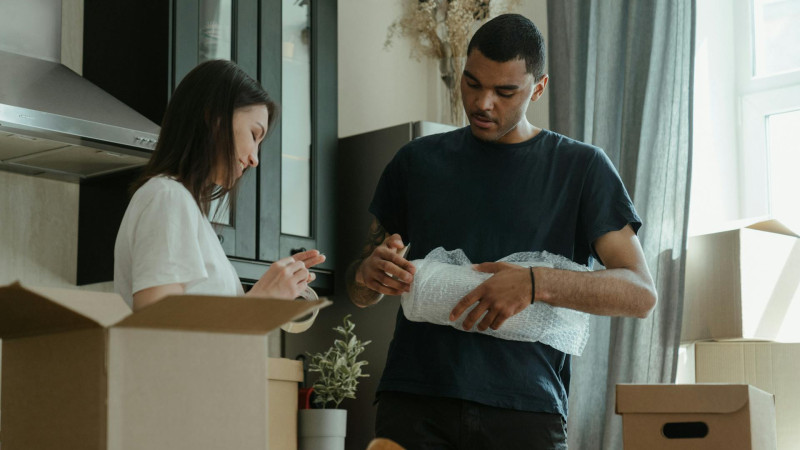Self storage can make life easier when you need a bit more room, but it’s not always as simple as packing a few boxes and locking the door. People often rush the process, and small oversights can end up wasting time and space. The good news is that with a little thought at the start, you can avoid most of the common self storage mistakes.
Here are a few mistakes people tend to make, and some practical ways to steer clear of them.
Choosing the Wrong Unit Size
A lot of people guess the size they’ll need, only to find out later that they’ve gone too small. Once you’ve filled every inch of the unit, it becomes difficult to reach anything without unloading half of it.
If you’re unsure, it’s worth checking with the storage staff before you move in. They’ll usually have a good idea of what fits into different units. It can help to jot down a quick list of what you plan to store, including furniture measurements if possible. You’ll save yourself the hassle of repacking later.
Forgetting to Label Boxes
It sounds obvious, but it’s easy to forget. You tell yourself you’ll remember what’s where, and a few weeks later it’s all a mystery. Clear labels on a couple of sides make a big difference, especially if you’re stacking boxes.
Some people go one step further and take photos of what’s inside before sealing each box. That small habit can save a lot of digging around when you’re trying to find something later.
Using Poor Quality Packaging
Old cardboard boxes are fine for short term storage, but if you’re planning to keep things for a while, they can start to sag or tear. When that happens, boxes lose their shape and anything stacked on top is at risk.
Stronger boxes or plastic containers are worth the investment. They stack neatly and keep contents dry. Use bubble wrap or soft materials around anything fragile, and fill empty spaces so things don’t move around during transport. For furniture, a cover or sheet will protect it from scratches or dust, but avoid wrapping wooden items tightly in plastic for long periods as that can trap moisture.
Skipping Insurance
People often assume their belongings are automatically insured once they’re in storage, but that’s not always true. Many storage providers ask customers to have their own cover in place. It’s worth checking before you move in.
Make sure the policy covers the full value of your items. It’s one of those things that seems unnecessary until something unexpected happens, and then you’ll be glad you sorted it early.
Packing Without Thinking About Access
When moving items into storage, there’s a tendency to stack everything in whichever order it arrives. It might seem quicker, but it often causes problems later when you need something buried at the back.
Try to think ahead. Keep things you’re likely to need within easy reach and store larger or less used items towards the back. Leave yourself a small path through the middle if possible, so you can move about without having to empty the entire unit.
Ignoring Temperature and Humidity
Some items handle storage better than others. Books, photographs, electronics, furniture and instruments are all sensitive to temperature changes. While most UK facilities are dry and secure, not all have climate control.
If your items are valuable or easily damaged, it’s worth choosing a temperature controlled unit. It’s a small extra cost, but it helps to prevent damp, mould or warping, especially if you plan to store things for several months.
Wasting Space
You’d be surprised how much space goes unused simply because items aren’t stacked properly. Piles of mismatched boxes or bags make the unit look full when there’s actually plenty of room left.
Using boxes of similar sizes helps you stack efficiently, and heavier boxes should always go at the bottom. If you’re storing long term, adding a small shelving unit can help you make better use of vertical space and keep everything tidy.
Not Checking on Your Belongings
Once everything’s safely in storage, it’s easy to forget about it altogether. But it’s worth dropping by now and then, especially if you’re storing long term. A quick visit lets you make sure everything’s still secure, dry and organised. It also gives you the chance to see what you can clear out, which often feels surprisingly satisfying.
Avoiding Advice
Most storage staff have seen it all, every type of move, every kind of packing mistake. They usually know what works best, so don’t hesitate to ask for help. A short conversation before you start can save you a lot of effort later.
Making Storage Work for You
Good storage isn’t really about space. It’s about organisation and a bit of planning. Choosing the right unit, packing properly and checking in from time to time can make the experience much smoother.
It’s worth slowing down a little at the start, even if you’re in a hurry to move. A few small steps – the right boxes, clear labels, decent planning can make all the difference once your things are packed away.
If you would like to learn more about how we can help here at Space Self Storage then don’t hesitate to get in touch with us or reserve your unit online today.


